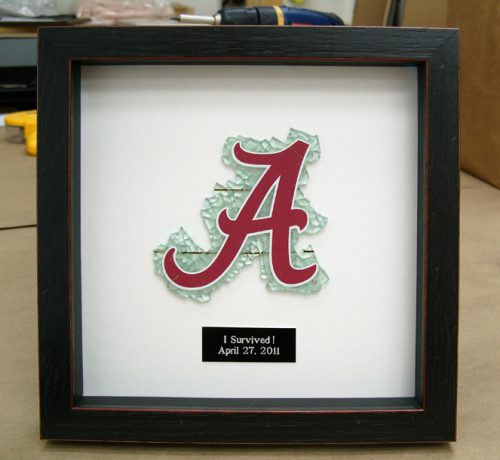What To Do with Water Damaged Art & Family Heirlooms in an Emergency Situation
INSURANCE COVERAGE FOR WATER DAMAGED ART
& HEIRLOOMS
- Inform your insurance company about damaged artwork as soon as possible. Most homeowners have insurance coverage for their home’s contents. That content insurance is applicable to not only artwork but family heirlooms as well. They need not be scheduled or listed separately nor be of high value to qualify for restoration.
- Take detailed photographs of the water related damages to your artwork and heirlooms. You cannot take too many. Don’t forget the backsides; they often depict a lot of information.
- Accompany your insurance adjuster and all investigating persons and contractors. Keep detailed notes of all conversations. You may want to record them.
- In order to process an insurance claim for damaged artwork, you will need to get a professional evaluation and provide a written assessment of damages and cost estimates. Four Corners can assess, document and create condition reports for insurance purposes.
HOW TO DRY WATER DAMAGED ART & PERSONAL TREASURES
THE BASICS
- Place your treasures in the hands of a professional as soon as possible. We offer both art restoration and conservation of works on paper.
- Mold growth will be minimized by reducing temperature and humidity, and by promoting air circulation where the damaged artwork is stored.
- Find a cool, dry space and use fans if at all possible.
- Place an absorbent material (paper towels, uninked newsprint, blotters, etc.) under the objects being dried. If stacking is required place the absorbent material between wet items. Replace the absorbent material as it becomes wet.
- If wet books, documents, photographs and textiles cannot be air-dried within approximately 48 hours, freeze them. If freezing isn’t an option, keep the objects as cool as possible with air circulation until air-dried fully. This will help retard the mold growth.
- Do not hang wet objects without professional advice. Most materials are significantly weaker when wet and will be stressed with hanging.
DETAILS
Framed Paintings
- Remove frames from your paintings. Water weakens the bond between the paint and the medium used to prepare the canvas.
- Keep wet paintings flat and paint-side up.
- Our frame restoration specialist employs a three-tiered approach — from simple repair, to repair and refinishing, to complete restoration.
Art on Paper & Photos
- If possible, very carefully remove artworks from their frames and follow the procedures for air drying listed above.
- Use extreme caution when removing the artwork. Most art objects become weaker and are more likely to tear when wet.
- The artwork is most likely attached to the matting or backing boards with an adhesive and this could prove problematic to remove.
- If the artwork does not easily come out of the frame or if you encounter resistance when removing the artwork from the mat or backing board, STOP. Have the artwork evaluated by a professional prior to further disassembly. It is better to leave a work on paper in a temporary wet state rather than risk tearing it.
- If an artwork appears to be stuck to the glass/plexiglass, leave it in the frame and place glass-side down to dry.
- Leaving it in the frame insures the art and glass will not move in opposition to one another and create further damage.
Photographs
- Store completely wet photographs in a container of clean water. Dry or freeze them within 48 hours. If possible, interleave photographs with wax paper prior to freezing.
- Freeze or air-dry damp or partially wet photographs.
- Four Corners can return badly damaged photographs to their original detail using digital photo restoration techniques to fashion new, unblemished prints.
Documents
- Remove any plastic covers.
- Within 48 hours, air-dry flat in piles no thicker than 1/8″, or pack snugly upright in original paper folders and freeze. If there are no folders, pack flat.
Textiles
- Air-dry or bag wet textiles in plastic and freeze.
- Briefly immerse partially wet textiles in clean water, blot, and air-dry or freeze.
Books
- Remove two or three books from each wet or partly wet shelf to relieve pressure.
- Evacuate all completely and partially wet books. Pack snugly, spine down, and freeze.
- Damp books can remain on shelves if the space can be kept cool and dry.
- Contact a commercial dehumidification provider if the space is flooded.
- Air-dry individual books by standing them upright and opening their covers gently to support book.


